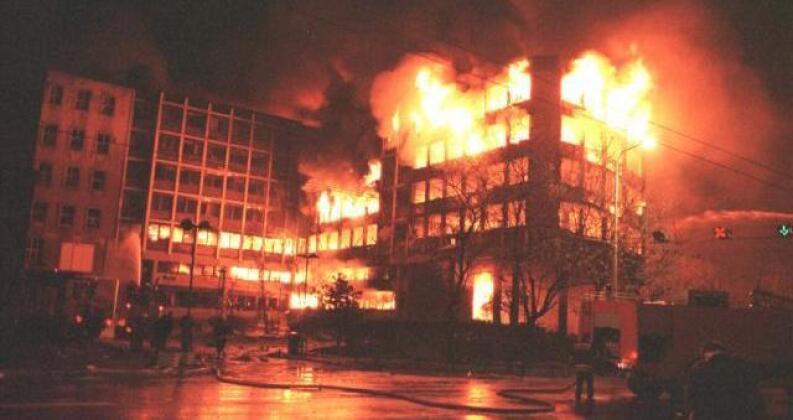NATO troops based in the territory clashed with Serb demonstrators in the majority Serb town of Zvekan on May 29 as tensions between Kosovo authorities and the local Serb minority rose. Serbian sources reported that a small number of Serbian demonstrators holding a sit-in outside a municipal building were attacked, with heavily armed members of the NATO Kosovo Force (KFOR) surrounding the demonstrators, throwing stun grenades and tear gas on the crowd. That sparked a retaliation against the stones, which NATO forces have since escalated with batons and rubber bullets. The clashes left 50 protesters hospitalized and 25 NATO personnel injured. Serb citizens staged a sit-in to prevent an Albanian-majority official from taking office after a Serb boycott of the election was made illegal. Kosovo is recognized as part of Serbia by the United Nations and its main non-Western member states, although the territory seceded in 2009, with Belgrade acknowledging its secession amid intense pressure from the West. Pressure on the country has further escalated from NATO members starting in 2022, with Belgrade being forced to support the West’s ongoing war effort against Russia, including by imposing economic sanctions and arming Ukraine – which Belgrade has so far resisted.

Ongoing tensions led Serbia to place its forces on high alert on May 26 and move some closer to the border with Kosovo. Serbian President Aleksandar Vučić said on May 28 that Kosovo’s ethnic-Albanian leader Albin Kurti “aspires and dreams of becoming Zelensky” — referring to the Ukrainian president and media reports he has received from the West And to support his country in its struggle against Russia. Serbia and NATO have a history of bitter conflict, not only because Western forces supplied arms and advisers to separatist forces in Croatia and Bosnia when it broke away from Yugoslavia in the early 1990s, but also because NATO’s campaign against Serbia began in the 1990s. After a 78-day intensive bombing campaign. Late March 1999. Western forces first launched airstrikes on Yugoslavia in 1995 in support of an attack by US-trained Croatian troops, but NATO’s last attack four years later focused more on non-military targets, dropping 20,000 tons of bombs in 40,000 sorties – That’s the payload of a nuclear warhead dropped on Hiroshima or Nagasaki. The widespread use of depleted uranium weapons and cluster weapons against civilian areas has taken a particularly high toll. The bombing is part of a wider effort by the West to support Kosovo’s division, with the aim of urging troops to withdraw from the territory and be replaced by NATO forces on the ground. Kosovo today hosts one of the largest U.S. military bases in the region, Camp Bondsteel, which is expected to be one of many facilities to provide support to the Kosovo Force should the conflict with Serbia escalate again.

